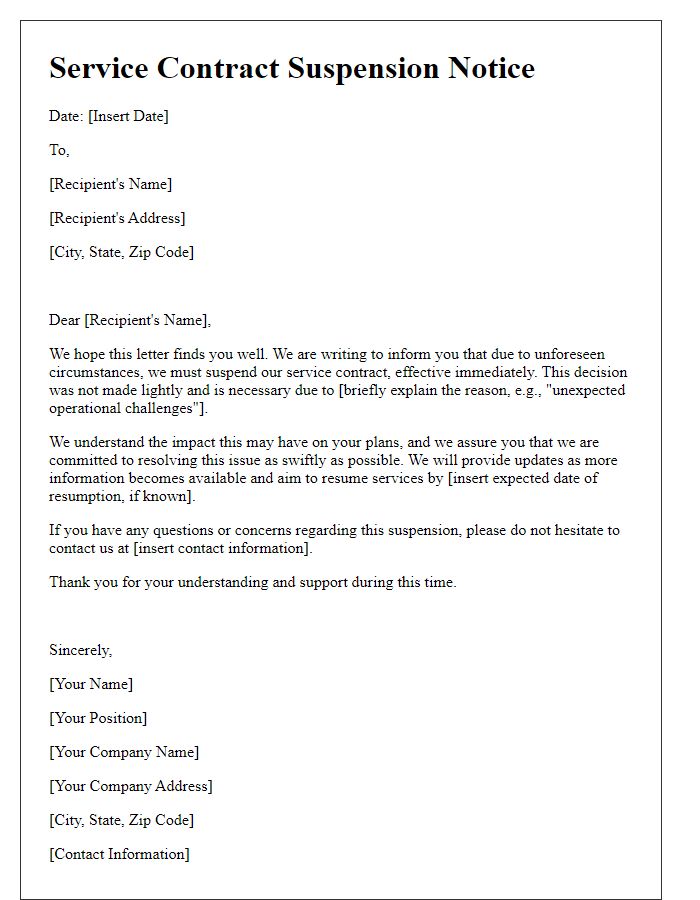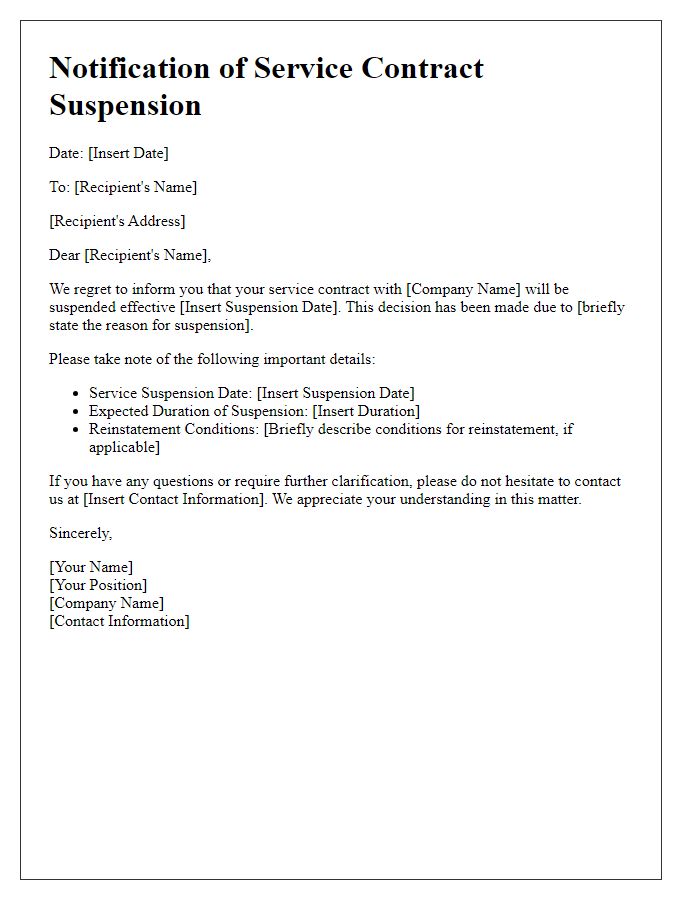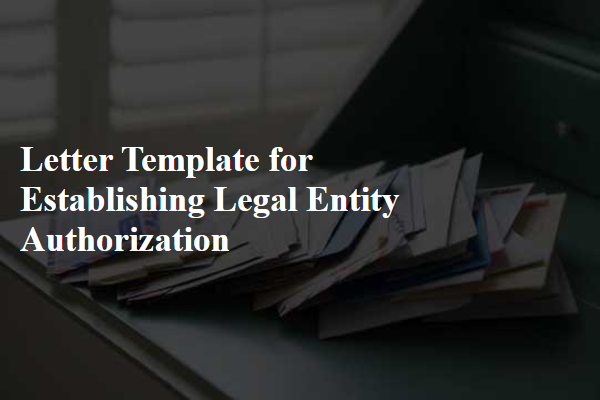Are you facing the need to suspend contractual services and unsure of how to effectively communicate this decision? Crafting a thoughtful and clear letter is crucial in maintaining professionalism and respect for all parties involved. By outlining the reasons for the suspension and emphasizing the importance of future collaboration, you can ensure that your message is both transparent and constructive. Ready to explore a sample template that can help guide you through this process?

Introduction and purpose of suspension
Suspending contractual services often occurs in various industries due to specific circumstances necessitating a temporary halt in operations. The introduction of suspension typically addresses unforeseen events, such as non-compliance with contract terms, safety violations, or external factors like natural disasters that affect service delivery. The primary purpose of the suspension is to mitigate risks, prevent further complications, and allow time for resolution or investigation. This process ensures that all parties involved in the contract, such as service providers and clients, understand the reasons behind the suspension and the steps needed to reinstate services in a compliant and efficient manner.
Detailed reasons for suspension
Suspension of contractual services can occur due to various critical factors impacting the quality, compliance, or viability of the agreement. Non-compliance with contractual obligations is a primary reason; for instance, failure to meet delivery deadlines or quality standards outlined in the contract can justify suspension. A significant breach, like unauthorized subcontracting or violation of confidentiality clauses, creates a lack of trust and reliability. Financial instability, such as a supplier declaring bankruptcy or defaulting on payments, raises concerns about the continuity of services. Additionally, alterations in regulatory compliance, including changes in legislation affecting operations, could necessitate a temporary suspension. Operational disruptions, such as natural disasters or pandemics, impact the ability to fulfill contractual duties, prompting a reevaluation of service continuity. Finally, persistent performance issues or unsatisfactory service levels, evidenced by client complaints or service audits, highlight the need for suspension to protect organizational interests.
Duration and terms of suspension
Suspension of contractual services refers to a temporary halt in the performance of obligations outlined in a legal agreement. This can arise due to various reasons, including non-compliance with terms, unforeseen circumstances, or mutual agreement. The duration of suspension typically specifies a time frame, which can range from a few days to several months, depending on the nature of the contract and the issues at hand. Terms of suspension often include conditions for reinstatement, responsibilities during the suspension period, and any financial implications, such as fees or penalties. Accurate communication regarding these details is essential to maintain transparency between parties involved and to ensure compliance with legal standards.
Contact information for queries
Suspension of contractual services can lead to significant disruptions in operations and requires clear communication. Affected parties should be informed promptly to discuss implications and next steps. For any queries regarding the suspension, contact the designated representative at the organization's official email address or phone number. Specifics about the reasons for the suspension should be outlined, along with a reference to any applicable clauses in the service agreement. Stakeholders should be aware of potential timelines for resolution and avenues for appeal, ensuring transparency throughout the process.
Next steps and future considerations
Suspension of contractual services often involves significant implications for both parties involved. The notification process should express clarity regarding the reasons for suspension, such as breach of contract terms. Specific thresholds might be established prior to suspension, like notification periods ranging from 30 to 60 days. Consideration of ongoing obligations, including asset management and inventory impacts, is crucial. Future negotiations might explore modifications to the original agreement, including revised timelines for service resumption and potential penalties for non-compliance. Legal ramifications must be understood, including possible claims for damages under local jurisdiction laws. Effective communication is essential for maintaining relationships and exploring alternative solutions.
Letter Template For Suspension Of Contractual Services Samples
Letter template of service contract suspension due to unforeseen circumstances













Comments